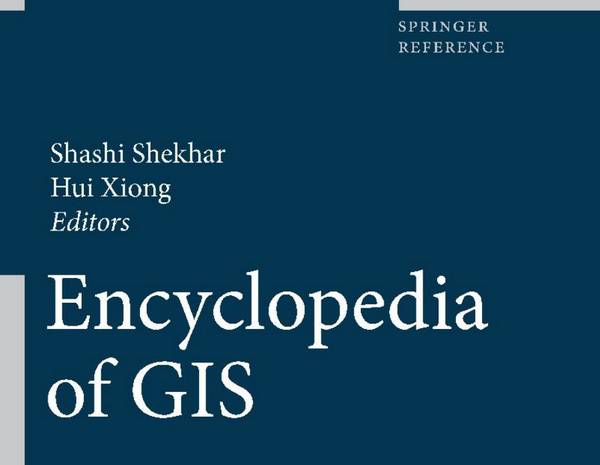[GIS Book/PDF] Encyclopedia of GIS
Preface
Interest in Geographic Information Systems, Science, and Services (GIS) has tremendously grown in recent years in many different ways. Researchers from a variety of academic disciplines are using spatial thinking and GIS tools to develop spatially-explicit models. Broad public interest in this subject is being fuelled by popular applications like Google maps, personal navigation devices, MapQuest, etc. Web-based software developers are increasingly exploring “mash-ups” integrating different information sources to web-based maps, such as Google Earth and MS Virtual Earth. Therefore, there is a need to bring key GIS concepts and results to a diverse audience as current GIS literature (e. g., textbooks, journals, conference-proceedings, trade-books) largely caters to either GIS specialists or end-users of popular GIS software.

The GIS research community is enthusiastically embracing encyclopedias, i. e., collections of articles on numerous topics in a field, as a tool to bring key ideas from a field to a general audience. This is not only evident from the preparation of multiple encyclopedias of GIS in the 2007–2008 time-frame, but also from the generous time commitments from GIS researchers contributing to the encyclopedia projects as authors, field editors and reviewers. The concurrent development of multiple GIS encyclopedias helped us define a focus, given the multi-disciplinary nature of the field.
This encyclopedia focuses on computational aspects of a variety of GIS concepts for a variety of reasons. First, computational advances are making GIS available to a wide variety of end-users, software developers and researchers. Second, many geo-spatial datasets are large and growing rapidly due to advances in cyber-infrastructure, including sensor and data management technologies. This will make computational issues even more critical in the coming years. Finally, computational technologies are advancing at a rapid pace, making new capabilities possible every few years. While the recent advances, e. g., Google Earth and Microsoft Virtual Earth, look impressive, we are likely to see even bigger advances due to growing computing power in the years to come.
Despite the focus on computational aspects of GIS, it was still challenging to narrow down the list of possible articles in order to explain the key software, datasets, and processes used by geographers and computational scientists. After all, our goal was to provide a comprehensive and authoritative treatment of GIS, providing easy access to the field.
Book Info
Authors: Shashi Shekhar, Hui Xiong
ISBN:0387359737,9780387359731,038730858X,9780387308586
Publisher: Springer
Year: 2007
Join Group
Due to copyright or some other issues, the resources you currently see may not be available, for more information, such as purchase, lease, second-hand transfer or other method, you can join our Telegram group, many other GIS tips would be shared here.
Telegram: Join GIS Hub Group
comments powered by Disqus